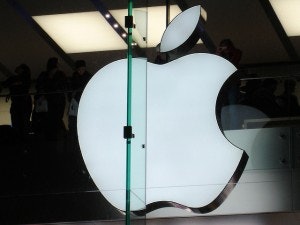
During the quarter the company sold 37.4 million iPhones, 7% more than the 35.1 million sold in the prior year period, and sold 19.5 million iPads including iPad Minis, a huge hike of 65% over the 11.8 million units sold in prior year second quarter. Automatically, this mix of products pulled down the bottom-line. But all this has a lot more to say than just a story about a fall in margins. And what is that? Let’s take a look.
Product development to cater to new markets
Apple Inc. (NASDAQ:AAPL) can choose to sell less of high-margin products or more of low-margin products or somehow strike a balance between these two, and the final decision should depend upon the expectation of total revenue and net profit from each of the alternatives. Now; demand is the factor that will primarily impact the functioning of the entire company, and the other factor which needs to be considered is place. While Apple’s high-price-high-margin business model worked out wonderfully for the company in the past, it might not continue to do so going forward.
Apple Inc. (NASDAQ:AAPL) has already captured a huge portion of the existing market and in order to grow, it needs to venture out to new markets. These new markets are very likely going to be outside the US and the UK and the common characteristic of these markets are that they are highly price-sensitive. In such a market, how can Apple’s old business model work?
This is exactly where peers such as Google Inc (NASDAQ:GOOG), Samsung and Nokia Corporation (ADR) (NYSE:NOK) are taking the lead. The growing trend is that people are favoring devices which are affordable to buy and easy to maintain. Surely there are people who love and admire Apple products and wish to own them. But the affordability factor pushes many of them to move to other phone makers.
For example, Apple Inc. (NASDAQ:AAPL) is having a great time in China, and claims that it has an 80% tablet market share in the country. So, what made this possible? The low-priced iPad Mini. China has many other 7-inch tablet makers who can provide the device at a lower price. Still, the Chinese users preferred to buy from Apple. This clearly points out that there is huge demand for Apple products and people wish to associate themselves with the brand. That’s why they gladly paid more when they could have easily paid less for other tablets. After all, at the end of the day, they were able to own an iPad but at a cost much lesser than that for a 10-inch iPad. Similarly, all around the world there are similar buyers and Apple needs to make the most out of them.
After the US, China is the next focus point for Smartphone makers, and presently the country is the biggest market out there. So if Apple Inc. (NASDAQ:AAPL) wants to enjoy a similar experience when it comes to iPhone in China, it definitely needs to work on a lower priced model.
Cheaper, not bigger, is needed
Many analysts are of the opinion that Apple Inc. (NASDAQ:AAPL) must introduce an iPhone with a bigger screen in order to battle Google Inc (NASDAQ:GOOG) Android powered devices. However, Google’s own statistics indicate that phablets and other large-screened smartphones on the Android platform actually form just 10% of active users, while 80% belongs to Smartphones with a normal screen size (i.e. 3.5-inch to 4-inch screens) and 10% belongs to smaller devices.
Apple Inc. (NASDAQ:AAPL) already has iPhones available with 3.5-inch and 4-inch screens and if it decides to launch a bigger iPhone and not compromise on quality (which is Apple’s golden rule), the company will have to charge a higher price for the device. Making a bigger and better iPhone and also making it cheaper is not a possibility unless Apple decides to sacrifice its share of profit.
Again, the smartphone market is not growing as rapidly as it used to. Analysts doubt whether there is enough scope left for a another high-end phone from Apple, as prices are being increasingly driven down by affordable phones from Samsung and Google Inc (NASDAQ:GOOG).
What I’m trying to say is Apple Inc. (NASDAQ:AAPL) needs to make cheaper phones and a 5-inch iPhone will definitely not result in that. Secondly, as per statistics, Apple doesn’t actually need to launch a bigger iPhone. We must keep in mind that Apple is targeting an audience which is price-sensitive, and this audience will choose to pay a decent price and get a decent device, rather than paying a premium and getting the best in class.
The majority of so-called phablets and large-screened devices have their major markets in developed economies such as the US and the UK, and Apple has already triumphed in those markets. As per the latest report from ComScore, as a smartphone manufacturer, Apple has the highest market share, 39%, while Samsung’s share is just 21% and HTC, Motorola and LG account for 9%, 8.5% and 6.8% respectively. So, in these developed economies, Apple as a phone maker is already leading. But, as a software platform, Google’s Android is way ahead of Apple Inc. (NASDAQ:AAPL) with 52% market share as against Apple’s 39%. So if Apple wishes to defeat Google’s Android, it needs to launch affordable handsets; just the way Google Inc (NASDAQ:GOOG) is trying to reach out to almost everyone through the highly affordable devices running on Android. Even Apple will have to figure out a way to attract newer customer segments through a more-affordable offering.
Concluding thoughts – making the smart move again
When Apple Inc. (NASDAQ:AAPL) launched the iPhone in China, it got a superb response and soon it captured a huge share of the space. But once Apple satisfied the affluent consumers and came to the next segment of consumers, it lost its lead to Samsung. However, that was not the case with tablets. Apple could satisfy the affluent ones with its 10-inch iPad offering and also could satisfy the following segments through its iPad Mini. Even with the iPod, Apple played a similar game. Apple had introduced the iPod Nano for $199 which was significantly costlier than the other available mp3 players; still the device was a huge hit since it was cheaper than the then $299 iPod Classic. Apple can make a similar smart move by introducing a cheaper iPhone.
But we can’t also expect Apple to make phones which will compete with the lowest of the Android smartphones. We have to live with the fact that no matter how cheap it becomes, it will still be priced higher than those from Samsung, Motorola and LG. Like AllThingsD said, the low-end iPhone is really a mid-end iPhone. Even analysts at J.P.Morgan think that if Apple launches a cheaper iPhone, it might be priced around $350-$400 (before subsidies). This way, it will be priced lower than present iPhone which costs $650 (without subsidies), but still be costlier than the $200-$350 Android smartphones. In fact, with this price tag, Apple maybe able to bite off a significant share of the $200-$350 segment that Samsung dominates presently.
Rita Chattaraj has no position in any stocks mentioned. The Motley Fool recommends Apple and Google. The Motley Fool owns shares of Apple and Google.


